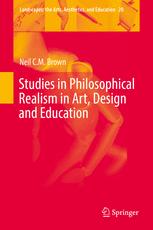

Most ebook files are in PDF format, so you can easily read them using various software such as Foxit Reader or directly on the Google Chrome browser.
Some ebook files are released by publishers in other formats such as .awz, .mobi, .epub, .fb2, etc. You may need to install specific software to read these formats on mobile/PC, such as Calibre.
Please read the tutorial at this link. https://ebooknice.com/page/post?id=faq
We offer FREE conversion to the popular formats you request; however, this may take some time. Therefore, right after payment, please email us, and we will try to provide the service as quickly as possible.
For some exceptional file formats or broken links (if any), please refrain from opening any disputes. Instead, email us first, and we will try to assist within a maximum of 6 hours.
EbookNice Team

Status:
Available4.7
9 reviewsThis book fills a gap in the literature of 21st century international visual arts education by providing a structured approach to understanding the benefits of Philosophical Realism in art education, an approach that has received little international attention until now. The framework as presented provides a powerful interface between research and practical reconceptualisations of critical issues and practice in the domains of art, design, and education that involve implications for curriculum in visual arts, teaching and learning, cognitive development, and creativity. The book extends understanding of Philosophical Realism in its practical application to teaching practice in visual arts in the way it relates to the fields of art, design, and education. Researchers, teacher educators and specialist art teachers are informed about how Philosophical Realism provides insights into art, design, and education. These insights vary from clearer knowledge about art to the examination of beliefs and assumptions about the art object. Readers learn how cognitive reflection, and social and practical reasoning in the classroom help cultivate students’ artistic performances, and understand how constraints function in students’ reasoning at different ages/stages of education.